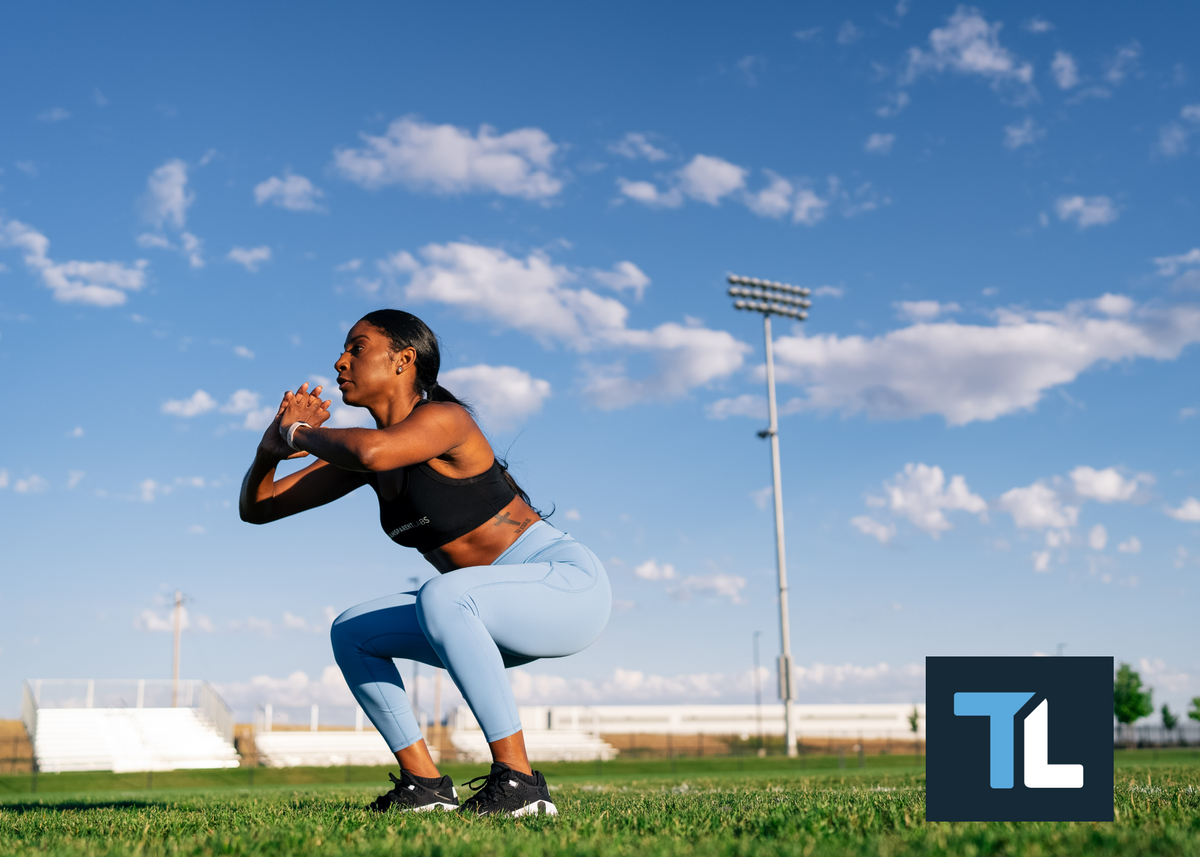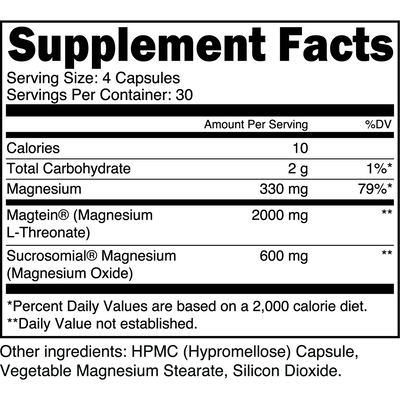How to Get a Big Butt: Glute Bridges, Hip Thrusts, and More!

Want to Get a Big Butt? Try These Glute Workouts!
Wondering how to get a big butt? (By "big butt," we mean strong and shapely, not flabby.) The key lies in training your gluteals, aka "glutes," with the right exercises.
It’s one thing to have shredded abs, a big chest, and sleeve-splitting arms, but building a bigger butt brings the whole package together. Aesthetics are just one of the many benefits associated with having a powerful, big butt. Strong glute muscles can help improve balance, posture, and function, leading to an overall healthier life.
In fact, the glutes are one of the largest and most explosive muscle groups in the human body. They play a critical role in several athletic movements, including jumping, sprinting, swimming, and squatting.
Many lower-body exercises you (probably) already do can help build a big butt, but you may have overlooked a few we'll discuss in this article, such as glute bridges and hip thrusts. With that in mind, let's dive into the best "big butt" workouts, to develop your glutes.
Why a Strong Butt Matters

The glutes are a group of muscles consisting of the gluteus maximus, gluteus minimus, and gluteus medius. These muscles are posterior and lateral to the pelvis and play a major role in hip movement. So if you’re wondering how to get a bigger butt, it starts with targeting these muscles.
Each of these three muscles serves its own purpose yet works in tandem to mobilize and stabilize your core and lower body. In other words, your glutes are crucial for spine and leg function, forming the foundation of strength and mobility. And, a round bottom looks great.
You need functional glute muscles to perform nearly any exercise — even those that don’t appear to be “glute exercises.” Strong butt muscles are necessary for the following movements:
- Hip extensions: Swinging your leg backward while standing in a glute kickback
- Hip rotations: Rotating the hips internally and externally as you do in a fire hydrant
- Hip abductions: Allowing your hips to open, as in a sumo squat
- Stabilizing the lumbar spine: Keeping your core stable for a bear crawl
- Standing: As when standing up from a squat or seated position
- Raising your core: As when standing from the bottom of a deadlift
- Stabilizing your pelvis: When walking or performing nearly any exercise
Butt workouts are an important component of any strength-training routine. Unfortunately, desk jobs and spending long hours sitting cause many of us to neglect our glutes. Over time, this can manifest into lower back pain, poor posture, and weak hamstrings.
Therefore, it’s increasingly important to train your glutes. Getting a bigger butt is just your reward for those hours spent in the gym.
5 Butt Workouts to Strengthen Your Glutes
Building a bigger butt starts with training your glutes. Weak glutes can lead to a number of injuries in your hips, knees, calves, and ankle regions [1].
While lifting heavy weights will certainly help strengthen your glutes, you can also get a great butt workout with resistance bands. Plus, resistance band workouts are convenient since you can perform them from the comfort of your home or while traveling.
Perform the five butt exercises listed below to help work your posterior chain and shape your booty.
Please note: We offer at-home instructions for each of the below exercises with bodyweight and resistance bands options. If you have access to gym equipment, you may perform these exercises with a set of dumbbells, kettlebells, or a barbell for added resistance. (For example, hip thrusts can be done with a barbell, a hip thrust machine, or resistance bands.)
1. Banded Hip Thrusts and Glute Bridges
You can’t build a big butt if your glutes aren’t being activated properly. Banded and barbell hip thrusts are ideal for training the gluteal muscles and developing the "mind-muscle connection" necessary for effective butt workouts [2]. Alternatively, glute bridges are a solid substitute for hip thrusts. These glute exercises are great warm-ups before moving onto other booty-building movements like squats and deadlifts.
Hip thrusts and glute bridges are almost the same movement, just with a different starting position. In a glute bridge, you begin laying flat against the floor, while in a hip thrust your back rests against an elevated surface, such as a Bosu ball, bench, or box. In both cases, keep your knees bent with your feet flat on the floor. Wrap a mini band 1-2 inches above your knees, around your quadriceps.
From there, you’ll follow the same steps for both glute bridges and hip thrusts:
- Tilt your pelvis in, brace your core, and tuck your chin. On an inhale, raise your hips by contracting your glutes and driving through your heels.
- At the end range of motion, your upper body should be in one straight line, with your core engaged (do not hyperextend your back). Continue to squeeze your glutes.
- Slowly lower yourself back to the starting position. For an added challenge, switch to a single-leg exercise.
2. Banded Clamshells

Clamshells are a hip abduction exercise that can be done anywhere. Like glute bridges and hip thrusts, we recommend performing clamshells at the beginning of your workout to help fire your glutes.
To perform a banded clamshell, wrap a mini band 1-2 inches above your knees, around both thighs. From there, keep the following cues in mind:
- Lie on your right side, with both knees bent at a 90-degree angle, stacked on top of one another. Brace your abs to prevent yourself from rolling backward.
- Keeping both knees bent and both feet in place, open your left hip. The goal is to point your left knee straight toward the sky while keeping your left foot and right leg in place. You should feel a slight burn in your left glute.
- Keep your feet together as you return your left knee to its starting position. Perform all reps on your left side before switching to your right.
3. Resistance Band Deadlifts
Deadlifts are a compound exercise — meaning, they recruit a number of muscles every repetition. Unfortunately, many athletes perform deadlifts the wrong way, which can lead to lower back pain.
To perform deadlifts the right way — and help build a bigger butt — keep the following tips in mind:
- Start with a wider stance (wider than shoulder-width apart), which helps target your posterior chain. This is sometimes referred to as a sumo deadlift, rather than a stiff-leg deadlift.
- Step into the center of the resistance band, grabbing the sides (or loops) with both ends. The band should be taut throughout the exercise, so you may need to “choke up” on the band.
- Roll your shoulders back and down, brace your core, and tuck your chin. Push your butt back toward the wall behind you, in a good morning position.
- Your goal is not to bring your hands all the way to the ground (this will cause your back to hunch, leading to injury). Instead, think about pushing your butt back as far as you can until you reach your end range of motion (your hands will probably be at the midpoint of your shin), feeling a strong stretch in your hamstrings. Return to your starting position.
4. Resistance Band Squats
Squats, like deadlifts, are a total body movement. Bodyweight and resistance band squats can be done anytime, anywhere — making it an incredibly flexible exercise. If resistance band squats become too easy, add a pulse to the movement, switch to single-leg squats, or try to perform squats on an unstable surface (like a Bosu ball).
To perform a resistance band squat:
- Begin in a standing position with your feet shoulder-width apart and your toes pointed fairly straight (if you have limited mobility in your hips, pointing your toes outward will help). Place a resistance mini-band 1-2 inches above your knees.
- Begin each movement by pushing your hips backward, bracing your core, and keeping your torso straight (do not hunch forward).
- Descend naturally until your quadriceps are parallel to the ground.
- As you return to standing, keep your weight on your heels (you should be able to wiggle your toes) and your knees pointed outward — do not allow them to cave in.
5. Standing Kickback

Glute kickbacks are an effective exercise to target your glutes. While you can perform this exercise by using a weighted machine or cable pulley, the most practical approach is to use a mini-band.
Wrap a mini-band just above your ankles, around both calves. From there, do the following:
- Stand with your feet hip-width apart. Now, shift your weight to your right leg, balancing on one foot. Squeeze your right glute.
- Keep your right leg stable (i.e., don’t allow it to move). Squeeze your core, and swing your left leg backward in a controlled fashion (your left foot may only move 8-12 inches, depending on the weight of the resistance band).
- When you reach your end range of motion, squeeze your left glute. Return your left leg to its starting position. Perform all reps while balancing on your right foot before switching legs.
Keys to a Big Butt: Workouts and Nutrition
The glutes comprise one of the largest, strongest, and structurally important muscle groups in the human body. If you're in a crunch for time, turn the five glute exercises above into an intense "big butt workout" by performing 20 reps of each exercise (for single-leg exercises, perform 10 reps on each side or 20 reps altogether) in a circuit fashion.
A circuit-style workout means you perform one set of each exercise consecutively with 10-20 seconds of rest between each movement. Once you've completed a set of all five exercises (i.e. one round), rest for 45-60 seconds and repeat. Perform 2-3 rounds of all exercises to complete the workout.
Glute workouts are only part of the equation to building a big butt; you also need to follow a proper muscle-building diet with plenty of high-quality protein, like Transparent Labs Whey Protein Powder.
If you're not eating adequate amounts of protein, your glutes will not recover efficiently, nor will they hypertrophy (read: grow). If you need help determining how much protein to eat, check out out Protein Calculator!









